Ivan Čuk
Editorial
Myrian Nunomura, Mauricio Santos Oliveira
PARENTS SUPPORT IN THE SPORTS CAREER OF YOUNG GYMNASTS
Thomas Heinen, Stefanie Mandry, Pia M. Vinken, Marc Nicolaus
MOTOR SKILL ACQUISITION INFLUENCES LEARNERS VISUAL PERCEPTION IN GYMNASTICS
Bojan Leskošek, Ivan Čuk, Maja Bučar Pajek
TRENDS IN E AND D SCORES AND THEIR INFLUENCE ON FINAL RESULTS OF MALE GYMNASTS AT EUROPEAN CHAMPIONSHIPS 2005–2011
Antonio Pineda-Espejel, Jeanette López-Walle, José Tristán Rodríguez, Mireya Medina Villanueva, Oswaldo Ceballos Gurrola
PRE-COMPETITIVE ANXIETY AND SELF-CONFIDENCE IN PAN AMERICAN GYMNASTS
Karmen Šibanc
HOW P.E. STUDENTS EVALUATE THEIR INTEREST AND POPLARITY OF ARTISTIC GYMNASTICS
Mavrovouniotis Fotios, Proios Miltiadis, Argiriadou Eirini, Soidou Andromahi
DYNAMIC BALANCE IN GIRLS PRACTICING RECREATIONAL RHYTHMIC GYMNASTICS AND GREEK TRADITIONAL DANCES
Kizzy Fernandes Antualpa, Roberto Rodrigues Paes
STRUCTURE OF RHYTHMIC GYMNASTICS TRAININGS CENTER IN BRAZIL
SIGARC
SIGARC 2012 REPORT
Ivan Čuk
Editorial
Dear friends,
Wish New Year started well for all of you, so did for us, as new seven articles are in front of you. Last year we started to use ScholarOne; we have new experiences, so do authors, and as we are all beginners in this field please be patient as we are all “exercising in new gym hall”. For those of you who would like to quote the Journal – its abbreviation in Web of Knowledge is SCI GYMNASTICS J.
Last year FIG voted president and prof. Bruno Grandi was reelected, for what we congratulate him. Also new committees were elected and we hope we can cooperate with them as we did in past. After all we do share passion for gymnastics and we want gymnastics to improve.
The first article in this issue is from Brazil by Myrian Nunomura, Mauricio Santos Oliveira. They researched how parents support influence child sport achievements. They have found that parental support enabled and greatly influenced the child’s entering into sports, their access to the practice of a sport, their level of participation, their degree of involvement, and their physical and emotional wellbeing. Moreover, the parental support is crucial to the commitment and dedication of the young gymnast. However, when this support is perceived in a negative way it can result in stress, conflicts between parents and children, burnout and may provoke dropout.
The second article is from Germany. Thomas Heinen, Stefanie Mandry, Pia M. Vinken and Marc Nicolaus contributed from motor learning area. Final conclusion is that when a learner acquires a motor skill in gymnastics, this changes the way the learner perceives that skill. Important outcome for P.E. University courses where practice is regarded as less important than theory.
The third article comes from Slovenia. Bojan Leskošek, Ivan Čuk and Maja Bučar Pajek analyzed how open ended Code of Points at example of European Championships between 2005 and 2011 works. Difficulty rises, execution falls, importance of execution is dropping. Is this really what we want?
For the first time we have contribution from Mexico. Authors Antonio Pineda-Espejel, Jeanette López-Walle, José Tristán Rodríguez, Mireya Medina Villanueva and Oswaldo Ceballos Gurrola during Pan American Games investigated how are related self confidence and prestart anxiety. Worth to read results in article.
The fifth article is from Slovenian Karmen Šibanc, she was interested how P.E. students evaluate gymnastics as a sport and how they compare it with other sports. Female students rank gymnastics higher than male students, however despite huge results of Slovenia gymnasts, gymnastics is still less interesting as other team sports.
The sixth article comes from Greece; authors Mavrovouniotis Fotios, Proios Miltiadis, Argiriadou Eirini and Soidou Andromahi were comparing rhythmic gymnastics and Greek folk dance program influence on dynamic balance ability. Interesting both has significant improvement on dynamic balance. The last article comes from Brazil. Rio de Janeiro Olympic Games are getting closer, and Kizzy Fernandes Antualpa and Roberto Rodrigues Paes made analyze what they have and what need to be improved in their rhythmic training centers if they want to have good results at home Olympic Games.
I wish you pleasant reading and a lot of inspiration for new research projects and articles,
Myrian Nunomura, Mauricio Santos Oliveira
PARENTS SUPPORT IN THE SPORTS CAREER OF YOUNG GYMNASTS
From the very first moment of entrance in sports up to the time of their successful achievements, parents have a pronounced influence on the sport’s career of their children. This influence is readily seen when the parent’s dedicated involvement and investment, both emotional and financial, put into the support they give to their children in sports is taken into account. This is all done with the objective that their young athlete may stay involved and reach their full potential. To describe the parental support in the context of Brazilian Artistic Gymnastics in formative categories, this study addressed the perceptions that young gymnasts have toward the behavior and attitude of their parents through a field research conducted among 29 sport institutions involving a total of 163 athletes. We have found that parental support enabled and greatly influenced the child’s entering into sports, their access to the practice of a sport, their level of participation, their degree of involvement, and their physical and emotional wellbeing. Moreover, the parental support is crucial to the commitment and dedication of the young gymnast. However, when this support is perceived in a negative way it can result in stress, conflicts between parents and children, burnout and may provoke dropout.
Keywords: artistic gymnastics, parents, youth sports
Thomas Heinen, Stefanie Mandry, Pia M. Vinken, Marc Nicolaus
MOTOR SKILL ACQUISITION INFLUENCES LEARNERS VISUAL PERCEPTION IN GYMNASTICS
Research has shown that perceiving and predicting the actions of others differs as a function of motor expertise. The aim of this study was to address the question if participants who successfully acquired a handspring over a vaulting box exhibit changes in predicting handspring performances of other people. It was hypothesized that participants who successfully acquired the handspring over a vaulting box should outperform participants of a control group in predicting the landing positions of handspring performances in a computer-based perception test. Participants of an experimental group learned the handspring over a vaulting box following a methodical progression. No treatment was given to the participants of a control group. Landing position predictions were evaluated in a computer-based visual perception test prior to, and at the end of the methodical progression. Results revealed that the participants of the experimental group predicted landing positions more precisely in the posttest compared to the pretest. Furthermore, participants predicted landing positions more precisely when video sequences were occluded earlier, arguing in favor of an optimal information density when predicting landing positions in handsprings. It is stated, that as a learner acquires a motor skill in gymnastics, this changes the way the learner perceives that skill.
whole article.pdfKeywords: handspring, methodical progression, motor expertise
Bojan Leskošek, Ivan Čuk, Maja Bučar Pajek
TRENDS IN E AND D SCORES AND THEIR INFLUENCE ON FINAL RESULTS OF MALE GYMNASTS AT EUROPEAN CHAMPIONSHIPS 2005–2011
The aim of the study was to investigate the trends in execution and difficulty scores of routines on all apparatus and in both qualification and final rounds of male European championships just before and during a 5-year period after the introduction of new “open-ended” Code of Points (CoP) in 2006. It was found that the new CoP solved the problem of invariant difficulty scores, most efficiently toward the end of the observed period (2011). Execution scores showed a clear decreasing trend, both in absolute value and also in it’s ratio with difficulty score. A question arises, if the decreasing influence of execution on final score (and therefore ranking of competitors) is the desired outcome of the new CoP and future evaluation of gymnastic routines. It was also questioned if the decrease in execution score should be solely explained by the increase of difficulty (which probably means more deductions) and some minor changes in CoP after year 2006, or it showed (possibly unjustified) changes in applying the CoP.
whole article.pdfKeywords: Artistic gymnastics, European Championship, Males, Judging, E-score, D-score
Antonio Pineda-Espejel, Jeanette López-Walle, José Tristán Rodríguez, Mireya Medina Villanueva, Oswaldo Ceballos Gurrola
PRE-COMPETITIVE ANXIETY AND SELF-CONFIDENCE IN PAN AMERICAN GYMNASTS
This study aimed to examine the intensity and direction of pre-competitive anxiety indicators (both somatic and cognitive), as well as self-confidence, in gymnasts participating in the 2011 Pan American Games. Sixty male and female artistic gymnasts participated, with ages ranging from 15 to 30 years (M = 21.04 years, SD = 4.016). The Revised Competitive State Anxiety Inventory-2 (CSAI-2R, Andrade, Lois, & Arce, 2007; Cox, Martens, & Rusell, 2003) and the direction scale by Jones and Swain (1992) were both administered. The results revealed that the intensity and direction of cognitive anxiety were positively correlated with the intensity and direction of somatic anxiety (r = .55 and r = .53, respectively), while self-confidence was negatively correlated with the intensity of cognitive anxiety (r = - 305) and also predicted it (b = - .192). Women reported significantly higher perceived somatic anxiety levels (2.79) than men (2.48). In conclusion, high levels of self-confidence decreased the perception of cognitive anxiety as being debilitative to gymnasts competing at the Pan American level.
whole article.pdfKeywords: artistic gymnastics, CSAI-2R, intensity and direction
Karmen Šibanc
HOW P.E. STUDENTS EVALUATE THEIR INTEREST AND POPLARITY OF ARTISTIC GYMNASTICS
In Slovenia gymnastics is covered on public and private television. Gymnastics in comparison to other sports is not very often shown on screens. The aim of our study is to find out, ‘How future physical education teachers evaluate gymnastics according to their gender and sport knowledge.’ We used 111 first grade students as a sample (76 males and 35 females). These students did not have any previous gymnastics experience. They had to complete a questionnaire where they evaluated gymnastics characteristics and also compared their interest for gymnastics with other individual and team sports popular in Slovenia. Results show that gymnastics especially on male student’s opinion is not very popular, female students like it more. Most of the students prefer to watch other popular sports. Student’s grades of gymnastics characteristics which are according to previous researches not what audience require. The expected conclusion is that gymnastics is one of less popular and lower rated sports in Slovenia. This is shown by the rating data from RTV Slovenia, even though Slovene gymnasts have always achieved good results and been very successful in international area.
whole article.pdfKeywords: audience, gymnastics, students, television
Mavrovouniotis Fotios, Proios Miltiadis, Argiriadou Eirini, Soidou Andromahi
DYNAMIC BALANCE IN GIRLS PRACTICING RECREATIONAL RHYTHMIC GYMNASTICS AND GREEK TRADITIONAL DANCES
Βalance ability influences learning and implementation of new skills, constitutes the basic factor for success in all athletic activities, and is a reliable predicting factor regarding the development of basic motor skills, academic success and risk of athletic injuries. The purpose of the present study was to examine the effect of a rhythmic gymnastics program and of a Greek traditional dances program on the dynamic balance ability of girls. Twenty-seven girls took part in the study. They were divided in two groups: Group A, received a 12-week program of Greek traditional dances at a frequency of one lesson per week for 90 minutes, while Group B, received a 12-week program of rhythmic gymnastics at a frequency of three lessons per week, each for 60 minutes. The frequency of the lessons was the accustomed one to the clubs of Greek traditional dances as well as to the clubs of rhythmic gymnastics with no competitive purpose. The methods of data collection included pretest and posttest measurements of the dynamic balance for the subjects of both groups. Dynamic balance was measured by the stabilometer platform (Lafayette Instruments). The results showed that after the 12-week intervention programs dynamic balance increased from 33.31+9.51 sec to 38.24+9.46 sec (z=-2.67, p<0.01) for Group A and from 30.83+5.57 sec to 36.69+7.68 sec (z=-2.44, p<0.01) for Group B. Consequently, rhythmic gymnastics, as well as Greek traditional dances are two activities that, even in a non-competitive form, could be used in order to improve children’s dynamic balance ability.
whole article.pdfKeywords: non-competive rhythmic gymnastics and dance, abilities, children
Kizzy Fernandes Antualpa, Roberto Rodrigues Paes
STRUCTURE OF RHYTHMIC GYMNASTICS TRAININGS CENTER IN BRAZIL
This study was elaborated with the purpose of knowing and describing the context of rhythmic gymnastics (RG) training centers (TC) in Brazil. This paper discusses the training centers, contextualizing the topic of this study, and configuring its scenario in Brazil. Qualitative research has been used, in order to meet the needs of the study. Data collection was done by non-participant observation, by means of a field journal, as well as by the description of the obtained data. Finally, data discussion was done, showing similarities and differences between the training centers assessed, always approaching the discussion of the physical structure of these places, and aiming, at the end of the discussion, to focus on the usefulness of these centers for the growth and development of the sport.
Keywords: rhythmic gymnastics, training centers, structure
SIGARC
SIGARC 2012 REPORT





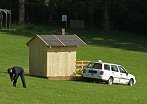






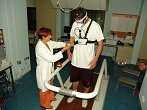


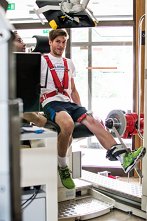







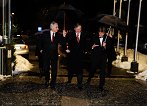

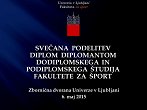
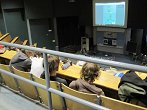

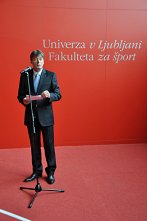
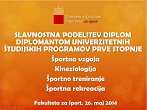




.png)